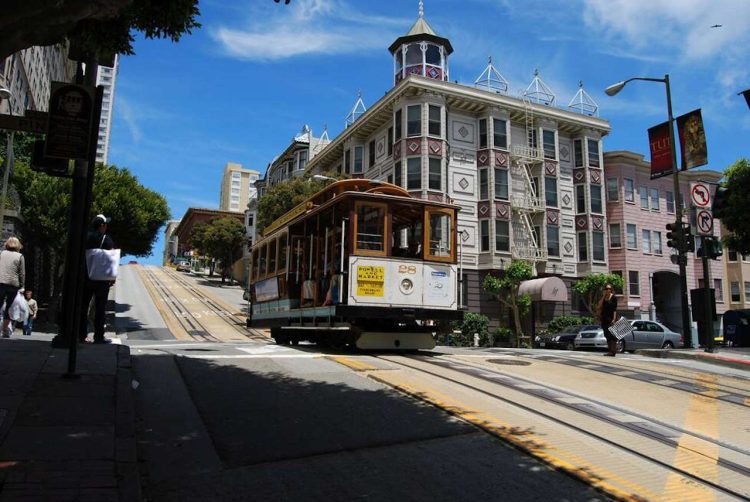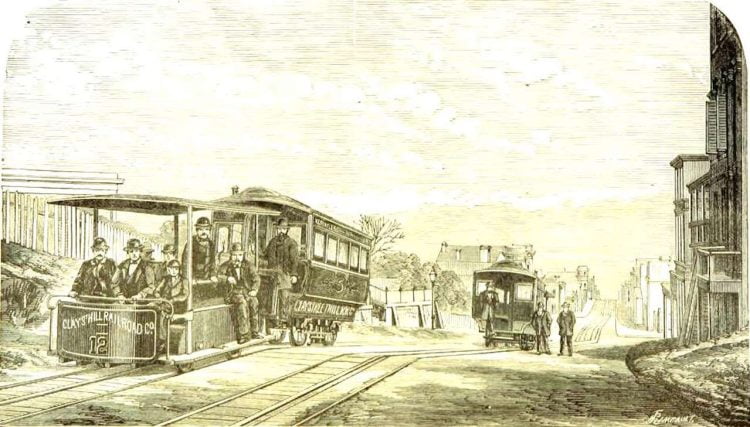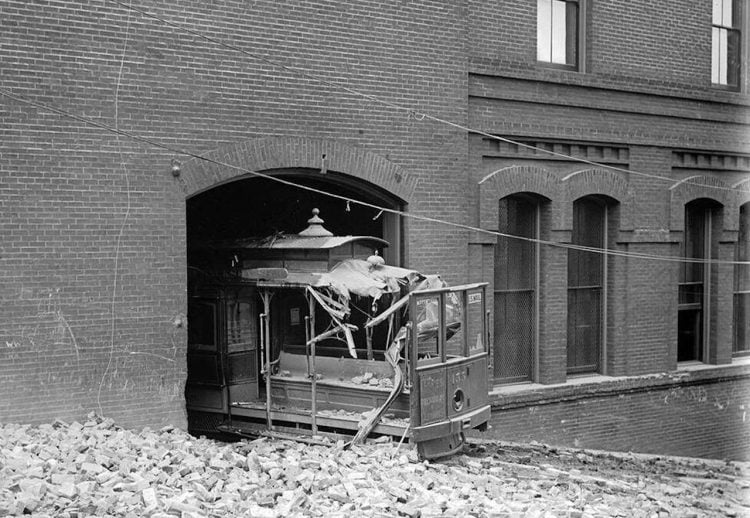This month marks 150 years since the Clay Street Hill railway in San Francisco became the world’s first successful cable-operated tramway.
It started regular service on 1st September 1873 and was driven by steam-driven continuously moving cable strong enough to haul a fleet of non-motorised tramcars and their trailers. They are set in motion whenever an operator (known as a ‘gripman’) used a ‘grip’ suspended from the car to attach it to the cable.

The system was invented by Andrew Smith Hallidie who was motivated after witnessing a horrific accident in 1869 when a horse-drawn tramcar slipped backwards on the city’s steep streets, the horses. His design was inspired by a system used to haul mineral ore from mines.
Imported Welsh anthracite coal was originally used to power the stationary steam engines, using up to 10 tons per day. In 1901, the engines were converted to run on oil which reduced the amount of dense smoke that they emitted. Later, they were converted to electrically powered motors.

By the end of the nineteenth century, the system had been extended for a total of 53 miles However, the city was devastated in 1906 by a calamitous earthquake and associated fires that threatened the network’s future as it was generally cheaper to replace the damaged cable tramways with conventional ‘streetcars’ powered by overhead lines. By 1912, only eight cable car lines survived, servicing routes that were too steep for ordinary electric trams.
During the 1920s and 1930s conventional buses were introduced, and in 1947 a city ordinance envisaged all remaining cable lines should be replaced as quickly as possible. This resulted in a vigorous campaign, which convinced the authorities that the cable car’s appeal as a valuable tourist attraction far outweighed their operational cost.

The remaining cable tramways were closed temporarily in 1982-4 and 2017-9 for rebuilding and upgrading, and closed again between March 2020 and August 2021 because the Covid pandemic. The system now carries seven million passengers, mostly tourists, and is protected as a National Historic Landmark.
Other parts of the world instituted similar systems, including Edinburgh, Matlock in Derbyshire, and the Great Orme Tramway from Llandudno up to the summit of the Great Orme, although technically this is a funicular railway rather than a cable-operated tramway, as the cable is not continuously running and the tramcars are permanently attached to it.





Responses